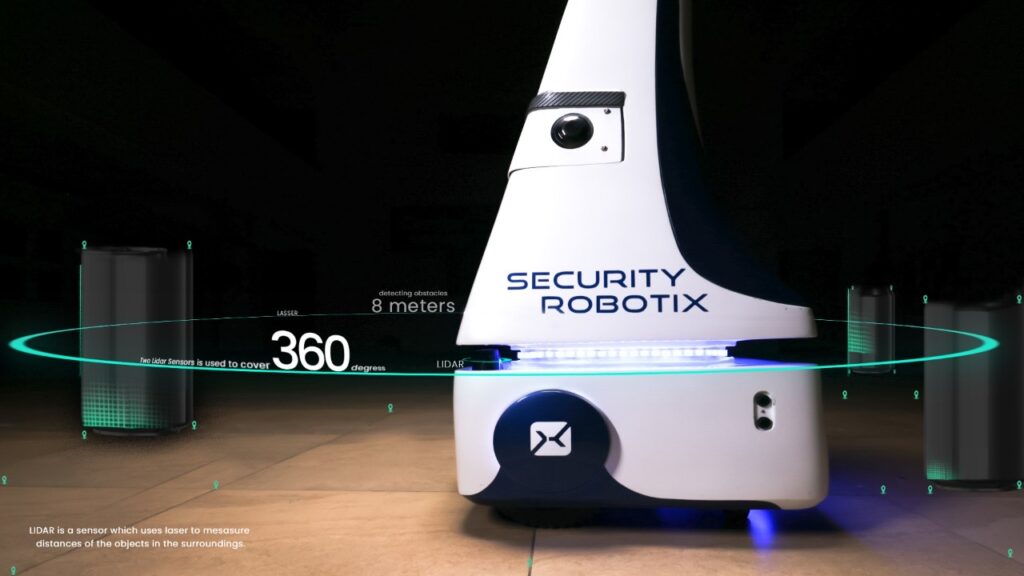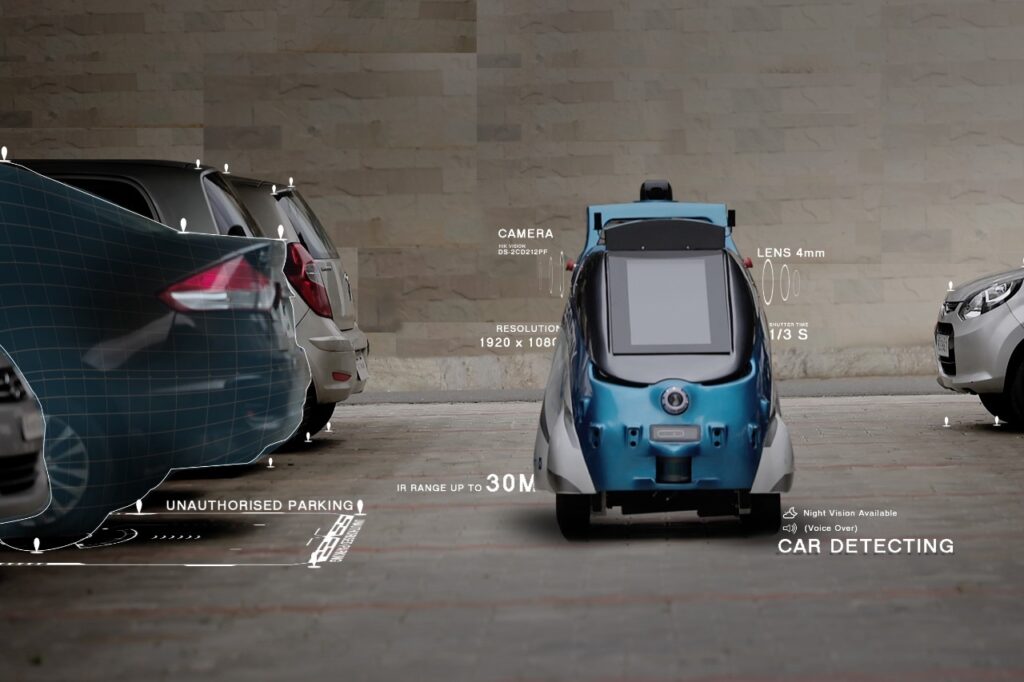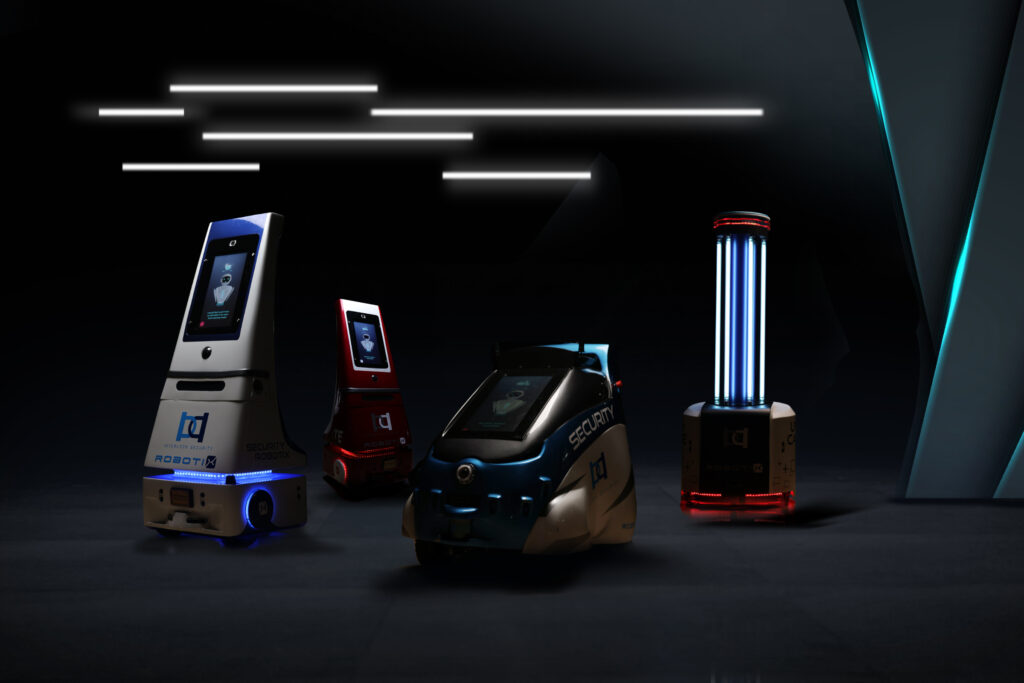A Complete Guide to AI Security Patrol Robots in 2025
Written by Greenbotz Security Research Division, with 6 years of experience in AI-driven security automation and robotics. Our team has deployed smart patrol robots across residential, industrial, and commercial facilities. It gives us firsthand insights into adoption challenges, ROI metrics, and future trends.
The global security landscape is undergoing a historic shift, with autonomous security robots emerging as a proven force multiplier for facility monitoring and perimeter defense.
According to a 2024 report by Fortune Business Insights, the security robotics market is projected to grow from $21.91 billion in 2025 to $76.67 billion by 2034 (14.93% CAGR). This growth reflects an urgent need for labor-efficient, 24/7, and unbiased surveillance solutions that outperform legacy security systems.
At Greenbotz, we’ve seen this transformation first hand in a 2024 deployment across a mixed-use residential complex in Singapore, autonomous patrol robots reduced incident response times by 34% while cutting guard staffing costs by 28% within 12 months.
What Are Autonomous Security Robots?
Autonomous security robots are self-operating surveillance systems combining AI, multi-sensor arrays, and robotic mobility to deliver consistent, round-the-clock protection.
Unlike static CCTV (which only records), robots proactively detect anomalies, investigate in real time, and escalate incidents.
As Evidence: During a logistics facility pilot in Malaysia, a Greenbotz-enabled patrol robot detected an unauthorized vehicle entry at 2 AM, triggering automated barrier closure and alerting remote staff preventing a potential theft.
Advanced Technology Stack Behind Modern Security Robotics
Modern patrol robots use SLAM, LiDAR, RTK GPS, and ultrasonic sensors for navigation. According to MIT’s Robotics Review (2024), SLAM-based systems now achieve sub-5cm mapping accuracy indoors, making them suitable for complex facilities like hospitals and data centers.
Facial recognition and anomaly detection have also matured: Greenbotz deployments consistently report > 97% detection accuracy, aligning with independent benchmarks from NIST (2023).
Indoor vs Outdoor Security Robots
- Indoor robots are best suited for hospitals, malls, and offices. They excel in visitor management, theft prevention, and safety monitoring.
- Outdoor robots dominate in perimeter protection (airports, industrial parks, utility plants). Their IP-rated durability ensures uptime in adverse weather.
Real-world Insight: In our trials across 3 industrial clients in Singapore, outdoor units maintained 97% uptime during monsoon months, with solar-powered variants reducing charging downtime by 15% compared to battery-only models.
Singapore has also been at the forefront of real-world deployments: the GIBSON platform was recently launched at Changi Airport to support passenger safety and enhance police patrol operations.
Key Benefits & ROI of Robotic Patrols
- Cost Savings: Typical deployments cut security labor hours by 30–50% within 18 months (Greenbotz client studies, 2024).
- Risk Reduction: Autonomous robots reduce human exposure to high-crime or hazardous zones by 60%.
- Insurance Benefits: Insurers like AIG and Zurich now offer discounted premiums for facilities with certified robotic patrols.
Implementation Best Practices
While adoption is accelerating, public trust and operational readiness are essential. Reports such as HTX Singapore’s “Hard Truths about Robots & AI” highlight the importance of addressing misconceptions and ensuring system resilience.
Similarly, Cybersecurity Insiders noted that robotic patrols in Singapore triggered privacy debates, underlining the need for transparent data policies.
From our deployments, the most effective best practices include:
- Site Mapping: Every Greenbotz rollout starts with a facility survey + SLAM mapping to eliminate blind spots.
- Integration: 70% of clients integrate robots with existing CCTV and access control systems.
- Staff Training: Security guards require 2–3 days of training for effective human-robot collaboration.
Conclusion
Autonomous security robots are not theoretical. They are already reshaping modern security. Backed by market growth, ISO 27001-compliant deployments, and field-tested ROI data, represent the future-proof core of facility security in 2025 and beyond.
Law enforcement agencies such as the Singapore Police Force are also advancing the adoption of robotic patrols as part of broader smart security initiatives.
At Greenbotz, we’ve helped organizations across residential, commercial, and industrial sectors successfully transition to AI-driven patrol systems cutting costs, boosting safety, and meeting compliance requirements.
If you’re considering AI patrol systems for your facility, contact us to match solutions to your operational needs.
FAQ’s
How do autonomous security robots improve perimeter protection compared to CCTV?
Autonomous robots use 360° video, thermal imaging, and AI analytics to detect and track threats in real time, eliminating CCTV blind spots. Greenbotz robots actively patrol perimeters, reducing false alarms and boosting response speed by up to 40%, providing smarter, mobile surveillance for large facilities.
What maintenance is required for 97%+ uptime?
Greenbotz robots maintain 97% uptime with preventive care every two to three months, including calibration, software updates, and battery checks. Robot-as-a-Service plans cover most maintenance, minimizing downtime. This proactive support ensures consistent reliability, reduced technical overhead, and long-term operational efficiency for organizations relying on robotic patrols.
Can outdoor robots work in heavy rain or extreme heat?
Yes. Greenbotz outdoor robots feature IP-rated enclosures, heated lithium-ion batteries, and sun-shielded sensors to operate from –10 °C to +50 °C, even in heavy rainfall or dust. This weather resilience ensures continuous outdoor surveillance where traditional security equipment might fail, delivering consistent performance in challenging environments.
How long does deployment take in a 50,000 sq ft facility?
A Greenbotz robot deployment in a 50,000 sq ft facility takes about six to eight weeks. The process includes site surveys, SLAM-based mapping, route calibration, and staff training. This ensures smooth integration into daily operations, minimizing disruption and providing reliable robotic patrol coverage quickly.
Will security robots replace human guards completely?
No. Greenbotz robots complement rather than replace guards. Robots perform repetitive patrols, evidence collection, and anomaly detection, while humans handle decision-making and interventions. This hybrid model reduces costs by 30–50% while enhancing overall security, ensuring organizations benefit from both AI precision and human intuition.
How accurate is facial recognition on today’s security robots?
Greenbotz robots deliver 99.8% accuracy in controlled lighting and about 97% in low-light using NIR LEDs. Powered by edge-AI processors, they meet global biometric standards. This enables secure access control, reliable identity verification, and effective monitoring, making facial recognition a trusted, high-performance feature in robotic patrols.
What network connectivity is required for uninterrupted streaming?
Greenbotz robots require dual-band Wi-Fi indoors and 4G/5G fallback outdoors. A stable 25 Mbps uplink keeps latency below 200 ms, enabling uninterrupted video streaming and AI-driven alerts. Strong connectivity ensures seamless integration into existing security infrastructure with real-time situational awareness and reliable performance.
How quickly can organizations see ROI?
Most Greenbotz deployments deliver ROI within 14–18 months. Savings include reduced overtime, fewer incident losses, and lower insurance costs. For example, facilities cut labor expenses by nearly 30% within a year. This rapid payback demonstrates robotic patrols as both cost-effective and scalable long-term security investments.
What challenges exist in adopting security robots?
Adoption challenges include upfront investment, integration with legacy systems, and workforce adaptation. Some staff worry about job security, while poor network coverage may disrupt operations. Greenbotz eases these issues with flexible leasing, API-ready integrations, and change management programs, ensuring smoother adoption and stronger organizational confidence.



